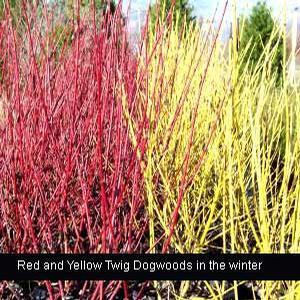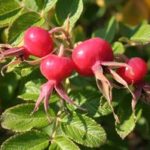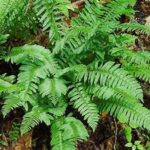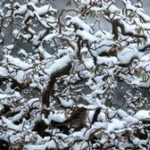As gardeners, we have a tendency to concentrate our efforts on spring and summer while often neglecting the fall and winter. When choosing plants, keep in mind things like branching habits, color, unusual bark, persisting seeds and berries, or swaying seed heads of ornamental grasses. These features will keep your landscapes alive and interesting throughout the winter months. There is still time to add some plants to the garden that can reward you with a beautiful garden every day of the year – even winter!
Color
One of the most unexpected points of color in winter can be the bare branches of trees and shrubs. For example, red and yellow twig dogwood are beautiful in summer but will be spectacular in winter when the branches suddenly stand out in the snow as colorful twist. Their unique silhouettes can also offer wonderful nesting places for birds.
We are all used to a nice splashes of color provided by the crabapples planted around town, but those decorative trees are not the only ones with beautiful berries. Japanese barberry can add interest to your winter landscape with a profusion of red or white berries. Rugosa rose as well as some varieties of landscape and knock out roses will develop red fruit (rose hips) that will add color while attracting birds to your snowy garden.
Low Growing Evergreens
Besides trees and shrubs, there are some perennial evergreens that will remain green throughout the winter. Christmas ferns, Lenten rose and wintergreen can liven your winter garden with
beautiful evergreen foliage. Lenten Rose, known to be the first to bloom in spring, will even begin blooming with snow on the ground. Wintergreen will add color with large red berries and the Christmas fern will provide year round visual interest as well as protective cover for birds and other wildlife.
Structure
Another way to add winter interest is to use the structure of the overwintering plant. The most common example would be usage of the tall perennial grasses with large plumes such as varieties of maiden grass. But other options include perennials with large sturdy seedpods which can look very interesting against the white background of the snow. So don’t be in a hurry to dead head your coneflowers, tall sedums or butterfly bushes. And certainly, dry hydrangea flowers still attached to the branches will look no less attractive than in a vase as a dried flower arrangement.
Finally, you may want to consider the Contorted Hazel (also called Harry Lauder’s Walking Stick or Contorted Filbert). The fabulous branches seem to have little sense of gravity, flipping and curling quite delightfully. In summer, it provides a nice background for blooming perennials and evergreens, but it’s at its best in the winter and in early spring before the leaves emerge to hide its interesting stems, suddenly becoming a sculptural masterpiece and an impressive focal point in your winter garden.





